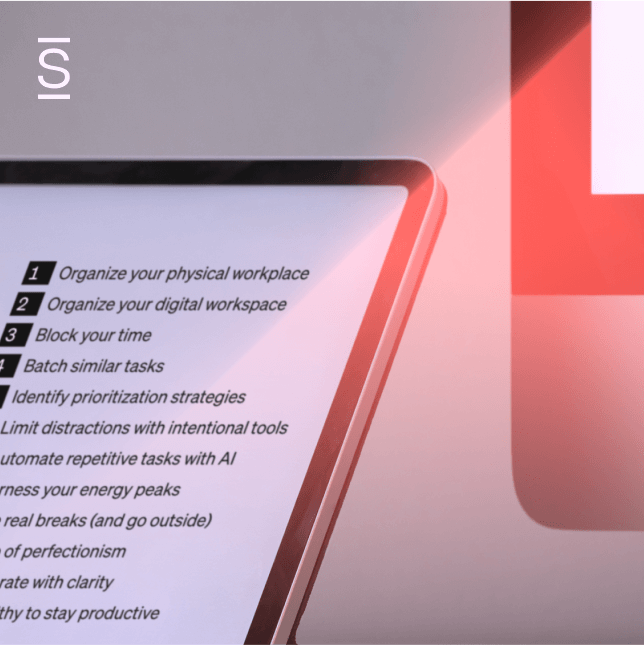How to find the courage to lead with love, in business, and in life, with talent management and leadership executive Laila Tarraf.
When Laila tragically lost her husband, and very soon after that, her father and then her mother, she underwent a profound spiritual transformation. Ultimately, in the fullness of time, she discovered that the true source of power comes from leading with an open heart. She believes that connecting to our common humanity and bringing heart into the workplace is what creates exceptional organizations.
After suffering these devastating losses, Laila began to realize that up to that point in her life, she had tended to push away anything ‘icky’ or negative, to ignore it, or intellectualize it, or even to reframe it to the positive. But, facing the future as a bereaved single mom she knew she had to get real. Those coping mechanisms of the past weren’t going to cut it, and, going forward, would not project a concept of healthy grieving to her small daughter, Nadia.
“As I made my way through the losses, having to keep it together and raise a child alone, I realized, that I couldn’t compartmentalize my feelings anymore and keep my personal and professional life separate.”
While Laila struggled with this, she began writing down insights of how life was changing, starting with conversations, many of them more intimate than previously, and how so much seemed more authentic when she dropped her guard and stopped trying to put a positive spin on everything. When she allowed her vulnerability to show, it gave her a sense of fulfillment, of resonating with other humans, given that we’re all on a similar journey through life.
Not ever wanting to forget the details of what she had been through and wanting to preserve the story of her journey through grief for Nadia as she got older, Laila wrote ‘Strong Like Water’ published in 2021. Part memoir, part psychological inquest, Laila delivers a leadership masterclass on how to achieve authentic, sustainable success.
What we can learn by reading ‘Strong Like Water’
The book can be read on many levels, Laila tells us. On one level, and counterintuitive as it sounds, “I’d like readers to discover that adverse times in our lives provide us with opportunities for growth by allowing ourselves to be present, not in denial, allowing ourselves to feel the pain. This makes you resilient and stronger.”
Another level relates to women in business perhaps following the patriarchal patterns of power, like strength, aggression, striving to overcome the opposition, and losing touch.
It’s not so much a gender thing, Laila explains, but more of a feminine touch, more about equilibrium, or yin and yang, if you like. Having previously known only one way to demonstrate power, she came to learn that a skillful blend of tenderness, nurture, and compassion is every bit as powerful as the more forceful approaches of the past.
On the deepest level, Laila would like readers to feel that self-forgiveness and self-love are the paths to accepting ourselves. If you allow yourself to stay present in what life hands out, then you’ll be able to experience the full beauty alongside the pain of whatever life brings.
“Don’t be scared or nervous to lean into the resistance because this is what will ultimately set you emotionally and spiritually free.”
See the trailer of ‘Strong Like Water.’
Examining the differences in leadership style between then and now
After the book came out, Laila asked a colleague what she had been like to work for in a previous life and learned that people wouldn’t necessarily have come to her with a complex problem. She wouldn’t listen and work through it, they told her. She was so much of a problem-solver; the solution was out of her mouth before they’d finished speaking. Laila prided herself on her rapid response problem-solving back then and liked to tidy up any messiness and put it out of the way.
“I think I bruised people,” she says, “I didn’t pay enough attention to how people were feeling because I just wanted a solution. And once I had that solution, or answer, I wanted the next and the next.”
Laila learned to make space for conversations, and not a moment too soon because when the COVID-19 pandemic arrived, people in positions of leadership all over the world realized very quickly that there were no fast solutions to the sudden problems they faced. Leadership became more about priorities, and offering support, and making decisions as and when possible because there were no answers.
Listen in order to lead with courage and love
Active listening is an essential part of employee communication. Having a conversation isn’t just waiting for a person to stop talking so you can speak. You may be dying to add value, but pause a moment to take in the body language, tone, mood, or attitude of the person speaking to you. Let them feel heard, cared for, and valued. If you can’t answer them, no problem. A lot of times, people aren’t really looking for an answer. They just want a bit of empathy or to brainstorm.
“If you can listen, and empathize, and bring these two things together within the relevant parameters of expectation, then this is the hat trick for leaders.”
The gender paradigm
Insofar as gender influencing a softer leadership style, Laila points out that a masculine leadership style came to her naturally. She was more than comfortable pushing back, going toe to toe with a predominately male executive class as she progressed in her career over the past 25 years.
“My sincere hope is that it will change. I see it changing already with male leaders now leading in a much softer, more balanced way.”
The ins and outs of company culture balance
Moving on beyond leadership and into company culture for a moment, we hear how Laila worked both at Walmart, headquartered in Arkansas, and at Pete’s Coffee and Tea, founded in Berkeley. Both companies had inherent company cultures, both entirely different.
While Walmart was focused on operational excellence, Pete’s was more to do with product quality. Both companies had strong cultures that truly enabled their missions, yet they were totally different, leaning in different directions. Laila noticed quickly how having a strong culture can be a double-edged sword, because the values that tie a company together can also become a reason or an excuse not to change.
“Everyone wants a strong culture, especially now that people realize how culture can really make a difference in how people show up, and how they work with each other. There are shared values to align to, but you can’t use that as an excuse not to evolve because we live in a dynamic world.”
But there’s a danger to creating the perfect idea of a culture and then being unable to deliver it. Strong values are all very well, but what is the emotional reaction, and how are people going to feel about those values? How are we talking, and relating to one another in the work environment? If company culture promotes noble ideals but in reality there’s dissonance, this is where trust in the workplace breaks down. You can offer employees any number of perks, but if they can’t talk openly to their manager, your culture is flawed.
Critical skills for leaders weathering the storms of a post-pandemic, new-culture, hybrid workforce
There’s a lot said nowadays about psychological safety in the workplace, which is the belief that you can make a mistake at work without getting punished. We learn from our mistakes for sure, but leaders and managers, while demonstrating a high level of care, must also be able to hold people accountable.
Also, frame the problems you’re solving as learning exercises because if it’s about learning, it creates a lot more space for people to get engaged and collectively figure things out. And leaders can show fallibility, be open about not understanding something or having missed something and ask for advice or help. Being approachable creates a safe space for people to speak up.
Up and coming changes for the next decade
Flexibility is here to stay, surely? “This nine-to-five life, with a two-hour commute, I really hope those days are gone,” Layla says. “Companies are telling us we’ve got to come back into the office, but I really don’t think five days a week is ever going to come back.”
Four-day shifts are likely to become the norm, with some employees working Monday to Thursday and others Tuesday to Friday, and with a greater acceptance of hybrid and remote work. There’s no ‘one size fits all’ solution to this, it’s got to be achieved by iteration and trying to find a balance, so everyone gets what they need.
Finding common ground with the help of HR
How quickly you find a solution to this new way of working depends on the size of your company. With a few hundred employees, the task isn’t so difficult, but leaders must be clear about what they want from employees and why. Do they actually need people in the office for four or five days a week, or is it just because? Also, whom do they need, and who don’t they need?
If there are people who cannot work from home, explain to them why they are treated differently. Every company is going to need something a bit different and all of it will affect the employee experience, so open dialogue with employees, pay attention to feedback, and establish principles and parameters around what you learn.
“The yin and the yang, the head and the heart, the masculine and the feminine, strong and soft, together, combined. Turns out it’s never either/or; it’s always both.” – from ‘Strong Like Water’ by Laila Tarraf.
You can read more about Laila Tarraf on her website, and follow her on Instagram and find her onLinkedIn. And be sure to check out the Cohesion podcast and subscribe to future interviews!

















